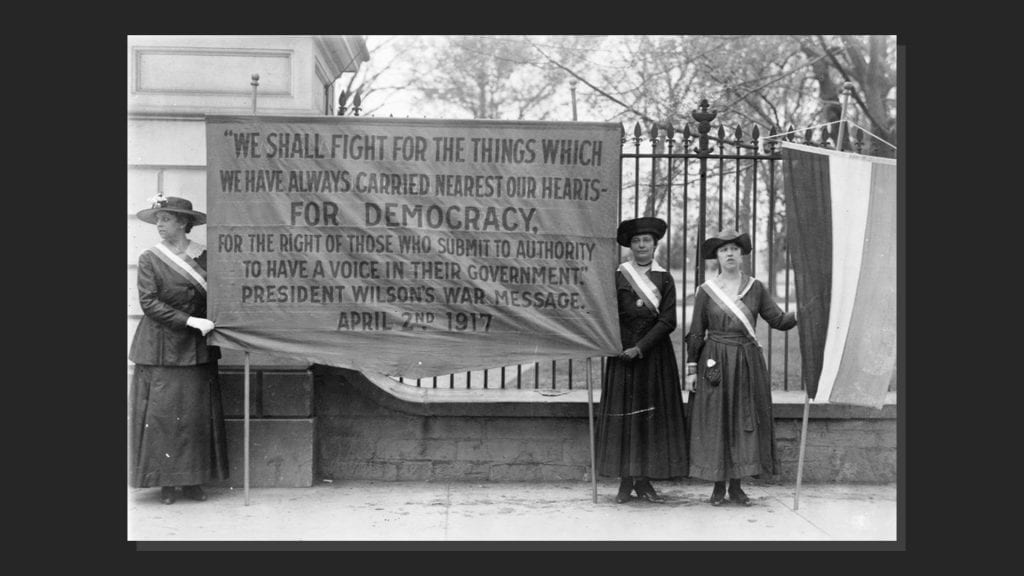
Today, August 26, is Woman’s Equality Day, a day that celebrates the certification of the 19th Amendment, which guaranteed women the right to vote. This year marks the amendment’s 100th anniversary.
Last week, a colleague with the League of Women Voters made a donation on our behalf to the Turning Point Suffrage Memorial, an outdoor park under construction in Lorton, Va. She did this to express her appreciation for our role in adapting a film for the League about the women’s suffrage movement. We hadn’t heard about Turning Point before but are thrilled to be associated with it now. This memorial recognizes the courageous women who struggled so long and hard to win the right to vote.
As we worked on the film, we learned that the early suffragists’ tactics and strategies foreshadowed those that civil rights activists would use 50 years later. These included organizing at both the local and national levels, marching on Washington (the suffragists’ 1913 march with its 5000-plus participants and half a million observers, was a model for later marches on Washington). And like the activists of the 1960s, these women endured hardships—even torture—to achieve their goals.
When the Turning Point Suffrage Memorial opens in 2021, visitors will travel back in time to the gates of the White House, where in 1917 suffragists stood as “silent sentinels,” picketing President Wilson for the right to vote. The memorial’s garden will feature a replica of the White House’s fence and gates along with statues of prominent suffragists and 19 interactive exhibits. Add to this a bit ofhistory, courtesy of the National Park Service—a section of the wrought iron fence that stood in front of the White House at the time.
Nearby is the infamous Occoquan Workhouse, where picketers were imprisoned for “disrupting traffic” (a trumped up charge if there ever was one). The women’s harsh treatment—they were beaten, tortured and force fed—caused a public outcry and made the country sympathetic to their cause.
Occoquan and the Turning Point Suffrage Memorial are just two of many national sites that honor suffragists. These include the Workhouse Arts Center and Lucy Burns museum, also in Lorton; the Women’s Rights National Historical Park and the Nation Women’s Hall of Fame in Seneca Falls, N.Y. (site of the first women’s rights convention); the National Women’s History Museum in Alexandria, Va.; the Susan B. Anthony House & Museum in Rochester, N.Y.; the Harriet Tubman home in Auburn, N.Y.; the Ida B. Wells-Barnett House in Chicago; and the Mary McLeod Bethune Council House, in Washington, D.C.
If you live near any of these sites, consider visiting them when the pandemic ends. Go to Turning Point’s site to learn about the history of the movement and identify the important early suffragists from your own state. Also note that many museums are marking the 100th anniversary of the 19th amendment with special exhibits this year. Plan your own “Trail of Suffrage” road trip this fall!
We hope you’ll be inspired to participate in the ongoing struggle to make voting simple and hassle-free for all citizens. We should never take our right to vote for granted. And never tolerate voter suppression and “gerrymandering” of districts to give one party an unfair advantage over another.
As the late Congressman John Lewis said: ” The vote is precious. It is almost sacred. It is the most powerful non-violent tool we have in a democracy.”
